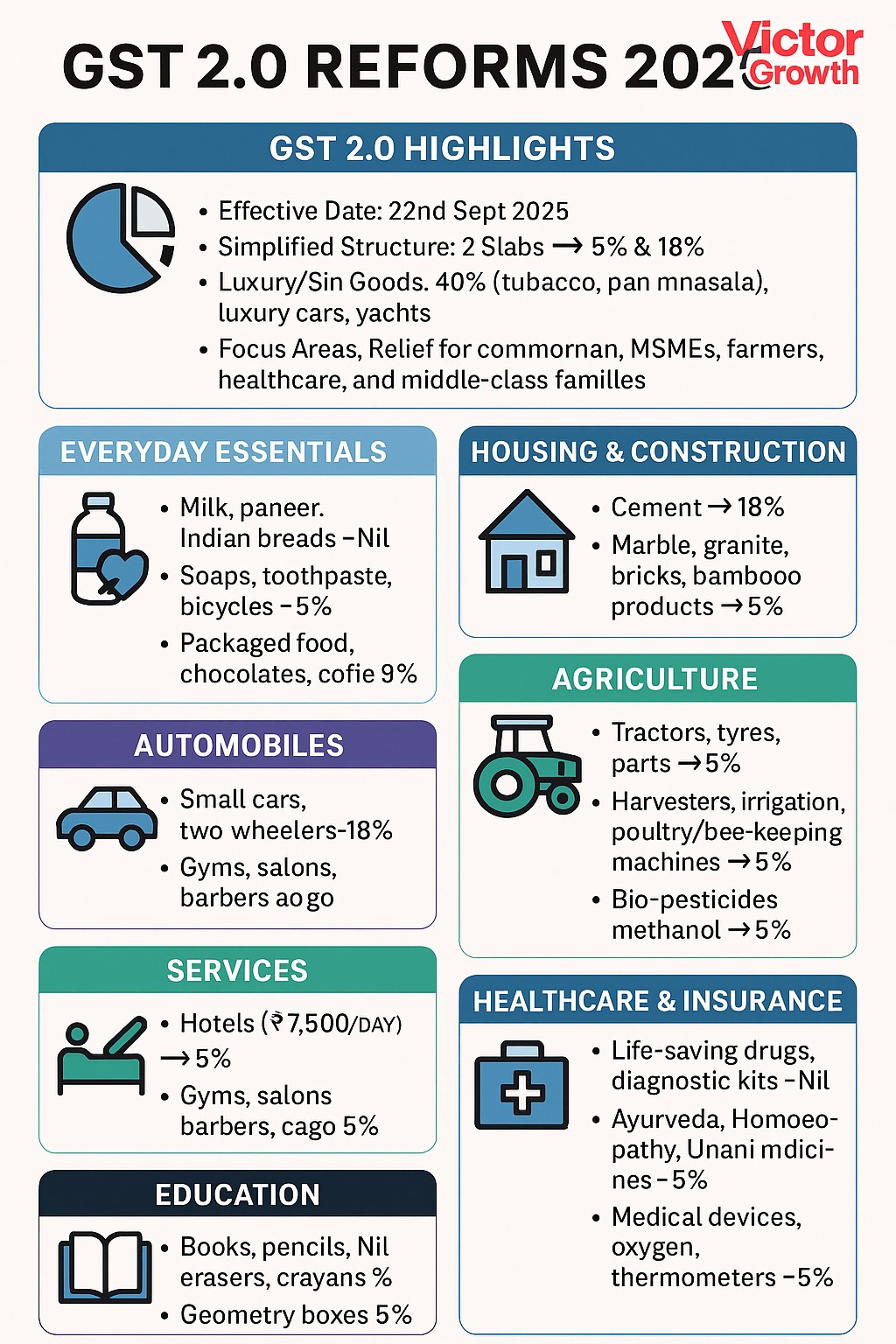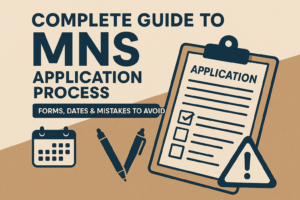🔹 Introduction
GST, launched on 1st July 2017, unified multiple central and state taxes, creating a common national market.
After 8 years, the 56th GST Council Meeting (Sept 2025) approved Next-Gen GST reforms to simplify rates, reduce burdens, and drive economic growth.
PM Modi announced these reforms as a “Diwali gift” to benefit the common man, MSMEs, farmers, women, youth, and middle-class families.
🔹 Key Features of Reforms
Simplified Structure: Only two slabs – 5% and 18% (removal of 12% & 28%).
Essentials: Daily-use goods like soaps, toothpaste, breads → 5% or Nil.
Healthcare: Life-saving drugs → Nil or 5%; medicines & medical devices → 5%.
Vehicles & Durables: Small cars, two-wheelers, TVs, ACs, cement → 18%.
Farming: Tractors, irrigation equipment, machinery → 5%.
Luxury/Sin Goods: Tobacco, pan masala, aerated drinks, luxury cars, yachts → 40%.
Effective from 22nd September 2025.
🔹 7 Pillars of GST 2.0
Simplified 2-tier tax structure.
Relief for households & common man.
Empowering MSMEs with lower compliance burden.
Supporting farmers & agriculture.
Boosting manufacturing & exports.
Strengthening state revenues.
Driving consumption-led growth.
🔹 Sector-Wise Benefits
🏠 Household & Food
Milk, paneer, Indian breads → Nil.
Soaps, toothpaste, bicycles → 5%.
Packaged foods (namkeen, sauces, chocolates, coffee) → 5%.
TVs, ACs, dishwashers → 18% (from 28%).
🏗️ Housing & Construction
Cement → 18% (from 28%).
Marble, granite, bricks → 5%.
Bamboo/wood packaging → 5%.
🚗 Automobiles
Small cars, two-wheelers → 18%.
Buses, trucks, auto parts → 18%.
🌾 Agriculture
Tractors, tyres, parts → 5%.
Harvesters, irrigation equipment, poultry/bee-keeping machines → 5%.
Bio-pesticides & menthol → 5%.
🏨 Service Sector
Hotels (< ₹7,500/day) → 5%.
Gyms, salons, barbers, yoga → 5%.
🎭 Toys, Sports & Handicrafts
Man-made fibre & yarn → 5%.
Handicraft idols, paintings, toys → 5%.
🎓 Education
Books, pencils, erasers, crayons → Nil.
Geometry boxes, trays → 5%.
🏥 Medical & Insurance
Life-saving drugs & kits → Nil.
Ayurveda, Homoeopathy, Unani medicines → 5%.
Spectacles, medical devices, oxygen, thermometers → 5%.
Life & Health Insurance premiums → GST Exempt.
🔹 Wider Benefits for All
Cheaper goods → higher savings → more consumption.
MSMEs more competitive due to reduced input costs.
Simpler compliance with two rates → fewer disputes, quicker refunds.
Larger tax base & better revenue through voluntary compliance.
Boost to domestic manufacturing & exports by correcting inverted duty structures.
Stronger social protection with exemptions on insurance & essential medicines.
🔹 Performance of GST (2017–2025)
Taxpayer base expanded from 66.5 lakh (2017) → 1.51 crore (2025).
GST collections doubled to ₹22.08 lakh crore in FY 2024–25, CAGR 18%.
Avg. monthly collections rose from ₹82,000 crore (2017–18) → ₹2.04 lakh crore (2025).
🔹 Conclusion
GST 2.0 introduces fairer, simpler, and growth-oriented taxation. By lowering costs for essentials, boosting businesses, and exempting critical healthcare/insurance, the reforms ensure ease of living + ease of doing business.
Effective 22nd Sept 2025, they represent a milestone in India’s journey toward inclusive prosperity and economic transformation.






